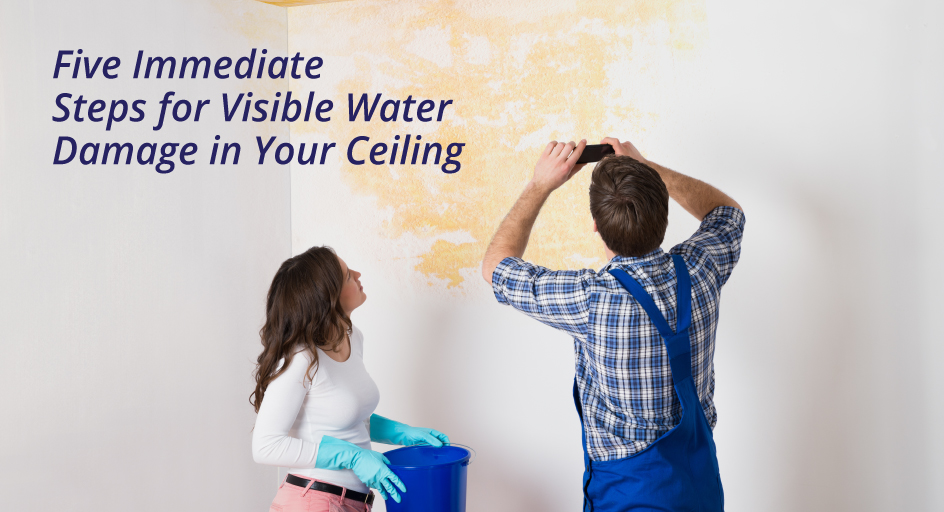
It’s a daunting moment when you look up to find a puddle in a light fixture or a growing water stain on a ceiling. Here’s what to do to minimize the damage and get help for a repair.
- Clear and protect the area beneath the stain. Move furniture and valuables, then lay down a tarp and a bucket that will catch any water as you triage the situation. This will hopefully protect your floors and belongings in case the leak worsens and pushes completely through the ceiling.
- Stop the water from traveling horizontally. This often means cutting a hole in your ceiling before professionals arrive. The problem with ceiling stains is that it’s difficult to tell where the water is actually coming from. A crack in the base of a fiberglass bathtub upstairs, for example, may not provide evidence in the ceiling immediately below the tub. Water will cling and travel along pipes and beams before absorbing into the ceiling below. You need to do everything in your power to stop the water stains from spreading, which will increase the damage and risk of mold. Poking a circular hole in the center of the water stain will hopefully expose the leak so it drips into a bucket rather than absorbing into sheetrock.
- Halt the flow of water. If water is moving fast, shut off your main valve and turn on a faucet in the lowest room in the house. This will get the excess water sitting in the pipes out before it has a chance to hit the leak.
- Call your insurance agent. In any event of damage to your home, you want your insurance agent involved immediately. He or she can recommend next-steps to protect your belongings and recommend professionals to call for help. Provided your problem wasn’t caused by a lack of maintenance (such as ignoring previous need for repairs), you should receive support from your homeowner’s insurance policy. Also, note that homeowner’s insurance will cover damage but not necessarily replace the item broke and caused the damage. So if your dishwasher goes bad and ruins the subfloor beneath the kitchen tile, you’d likely receive assistance with the flooring but not money for a new dishwasher.
- Dry out the damage. Moisture is the root cause of mildew and mold. Ask your insurance agent about his or her recommendations for whether it’s worth using a fan on the damp plaster or if perhaps you’d be safer long-term to cut out and replace the section of ceiling affected by the leak.
After initially getting the situation under control, if your main valve is still on and you aren’t sure whether the water is dripping from a pipe, the roof, or another water source, note that there is a simple trick for determining if plumbing is indeed the culprit. First, make a note of the number on your water meter. Next, turn off all faucets and appliances that use water. If you’ve got an issue with indoor plumbing, like a crack in a pipe or issues with caulking, within about three hours you will have found that number has increased.